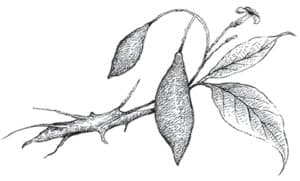Overview
Ibogaine is a naturally occurring substance that is both chemically and pharmacologically complex. Its multi-faceted mechanisms of action produce benefits in the treatment of a number of different conditions that involve neurological repair and/or the transformation of psychological states. While this including neurodegenerative disorders and various forms of psychological distress, its cumulative physical and psychological effects make ibogaine uniquely suited for the treatment of addiction.
One of the most predominant qualities of ibogaine is its powerful psychoactive effects, which some people experience as oneirogenic, “stimulating waking dreams.” Regardless of the specific content of this experience, ibogaine is known to bring on a profound shift of perspective around issues that are deeply existential or personally meaningful. On a neurological level, ibogaine stimulates a period of neuroplasticity that can repair neurological degeneration and ease various kinds of neurochemical transitions.

Learn About the World Class Ibogaine Treatment at Anzelmo
How Does Ibogaine Work?
Psychoactive Effects
The most pronounced of ibogaine’s qualities are its psychoactive effects. Although it is commonly described as a psychedelic, ibogaine’s particular effects are quite distinct from substances such as LSD, psilocybin and DMT (found in ayahuasca) in many ways. These “classical” psychedelic compounds generally effect a small range of serotonin receptors, especially the 5-HT2 receptors, while ibogaine’s effects cross multiple receptor sites, including numerous dopaminergic, serotonergic, NMDA, and sigma receptors. This has led some researchers to suggest that ibogaine’s anti-addictive properties are associated with several rather than any one of these influences.
Rather than psychedelic, ibogaine’s effects have been described as oneirogenic, or “stimulating waking dreams.” For a certain number of people who take ibogaine these dream-like effects include visual imagery, some of which has clearly pronounced and very personal meaning. The range of content can be very broad, there are some strong commonalities in the experiences people describe, and the similarity to the quality and content of dreams is quite strong. According to one theory, ibogaine stimulates a REM-like state while conscious. REM or Rapid Eye Movement is generally associated with dreaming, and is an integrative phase of sleep during which it is believed that we learn from our memories, integrating subconscious and emotional content from our daily lives.
This integrative experience can lead to profound shifts of view, reorienting people towards their sense of self, their past, loved ones, the environment, or other aspects of their lives. This shift of perspective generally takes place regardless of whether or not people see or remember visual imagery.
Ibogaine’s effects are also somewhat dissociative. Other known dissociative compounds sounds as ketamine share ibogaine’s action on the NMDA receptor. During the ibogaine experience this may account for the fact that most people experience a state that some psychologists have described as “the witness,” where one is able to watch experiences flow by without identifying or reacting to them in a powerful way. Even when the visual content or personal insights that people experience are strange or difficult to face, people tend to experience this with a sense of calm receptivity.
Neuroplasticity
Neuroplasticity is defined as “The brain’s ability to reorganize itself by forming new neural connections throughout life.” During a state of opioid dependence, the brain becomes fixed in one learned mode of attaining self-balance, relaxing, and reducing pain: finding an external source of dopamine through opioid use. The discomfort associated with withdrawal happens as a result of the brain’s inability to adapt quickly enough to find other sources of dopamine through its own production of endorphins or by other means.
Ibogaine contributes to a highly flexible state of neuroplasticity, allow for the rapid transition from neurochemical dependence. One of ibogaine’s effects is to re-sensitize dopamine receptors, effectively reducing the tolerance to dopaminergic substances like opioids. Describing ibogaine’s activity in terms of neuroplasticity is more accurate than imagining it as a “neurochemical reset,” and it is more useful to understand it this way in the therapeutic process. Rather than imagining that the brain and the body have returned to a “pre-use” state, it is an opportunity to make a desired shift that once had numerous biological and psychological barriers. This state of neuroplasticity is invaluable in learning and engraining new patterns of behavior. This is part of the reason that we recommend ongoing therapy as part of a treatment protocol.
Ibogaine Detox with World Class Medical Support
Natural Origins
Ibogaine is an indole alkaloid found in members of the Apocynacea family of plants. By far the most well-known of these are members of the Tabernanthe genus, particularly Tabernanthe iboga (iboga) and a number of other similar species that are native to the Central African coast. Although in its traditional herbal form it is just one component of a powdered root bark, ibogaine is most commonly administered as a powdered extract better suited to many medical uses.
At Alzelmo we take great care in sourcing ibogaine and are deeply committed to a philosophy of sustainability and reciprocity. One of the ways that we give back is that for each treatment conducted at Anzelmo we contribute to planting 3 trees in iboga’s endemic habitat in Gabon.


